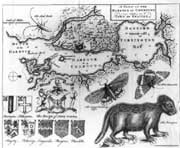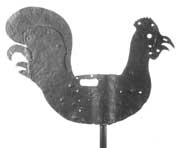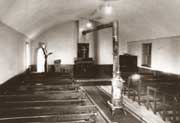


| German Heritage |
More "LDC"
|
|
|
|
Photo
Gallery
|
Establishing a new community
June 1749: The founding of Halifax Edward Cornwallis brought 2000 settlers to Nova Scotia to establish a military base (to be called Halifax) as part of Britain’s struggles with France for supremacy in North America. Most of these settlers came from English cities. It soon became apparent that they did not possess the skills needed to carve a new colony out of the wilderness, so Cornwallis arranged for the British government to send "Foreign Protestants" to Halifax. These hard-working immigrants, most of whom spoke German, sought freedom from religious, economic and political stress in Europe. 1750-1753: The Foreign Protestants More than 300 "Foreign Protestants" arrived on the ship
Ann. Many of them died of Typhus (ship fever) following the voyage
and were buried in a mass grave on a piece of land outside the palisade
given to the newcomers as a burying ground. 1750-1753: In all, 3000 German, Swiss and French immigrants
arrived in Halifax. They were placed in the "north suburbs"
near the burying ground. However, in 1753 most of the newcomers
moved on to settle Lunenburg. Many of today’s German street
names (Brunswick, Gottingen, Artz) reflect the influence of these
early settlers. 1753 on: The German families who stayed in Halifax were
led by a prosperous fur trader, Otto William Schwartz, whose descendants
founded the W.H. Schwartz and Son spice company. 1756: Moving the Little Dutch (Deutsch) Church 1756-1786: The Lutheran and Anglican Traditions 1786: The Rev’d Bernard Houseal 1790: The congregation expanded and prospered. Many non-Germans
attended, and English was increasingly used. A larger church was
needed. Just 40 years after the Foreign Protestants arrived in Halifax,
plans were being made, under the patronage of Edward Duke of Kent,
for a magnificent new Saint George’s. Construction of the round
church began in 1800.
History
| Architecture
| Rise Again
| Community |











 Foreign
Protestants brought in to help the British found Halifax adapted
quickly to conditions in their new home, worked hard and prospered.
Today, their church is a living reminder of their faith, tenacity
and vision.
Foreign
Protestants brought in to help the British found Halifax adapted
quickly to conditions in their new home, worked hard and prospered.
Today, their church is a living reminder of their faith, tenacity
and vision.  To
satisfy their longing for a church in which to practice their Lutheran
faith, the Germans moved a cottage to the burying ground and placed
it over the grave of the settlers who died in 1750. In 1760, they
extended the building and added a spire in the style of their homeland,
topped by a weathervane fashioned from a shovel. Otto Schwartz became
the first elder of the church.
To
satisfy their longing for a church in which to practice their Lutheran
faith, the Germans moved a cottage to the burying ground and placed
it over the grave of the settlers who died in 1750. In 1760, they
extended the building and added a spire in the style of their homeland,
topped by a weathervane fashioned from a shovel. Otto Schwartz became
the first elder of the church.  1800
on…A changed role
1800
on…A changed role